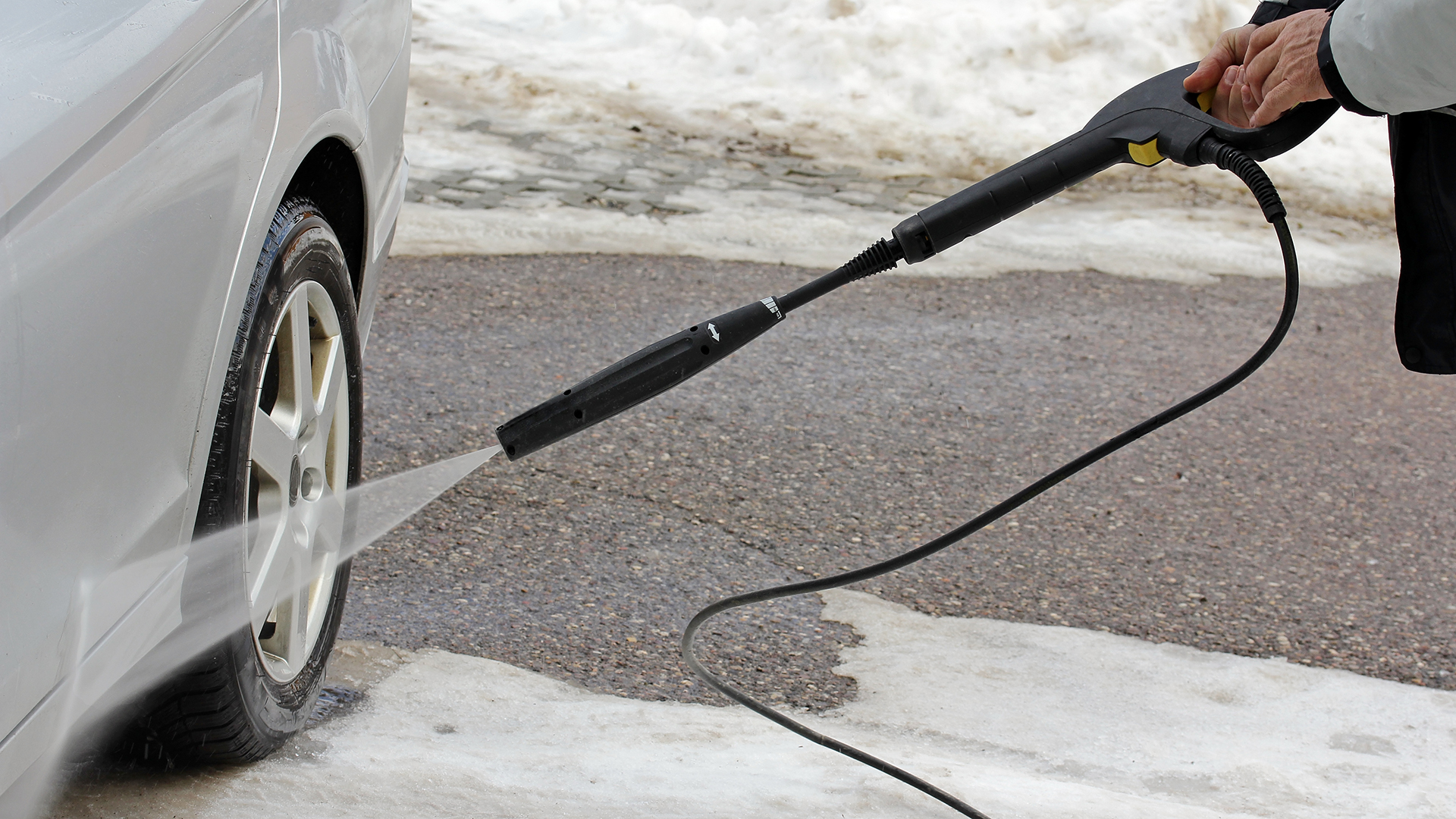If you want to keep your pressure washer in great condition and your warranty in place, you’ll need to ensure your pressure washer is protected over the winter months. We’ll show you how to winterize your pressure washer so that all its components, including the pump, pistons, seals, hoses, and fuel tank, are kept lubricated and free from any water that could freeze when the temperature plunges.
Winterizing your washer takes just a few minutes and is cheap and easy to do. Plus, it will save you money in the long term. We’ve got top tips from a gardening expert on how to go about it, as well as what to do if you want to go the extra mile in ensuring your pressure washer is protected all winter long.
And if you’re looking to buy a pressure washer or replace your old model, you’ll find the best pressure washers in our buyer’s guide, from gas and electric models to lightweight and budget options. Alternatively, check out the latest cheap pressure washer deals for a great bargain.
Why should you winterize a pressure washer?

Fiona Jenkins is a landscaper with over 25 years of experience in the industry. As a gardening expert for MyJobQuote, one of the UK's top trade-matching sites, Fiona offers her expert advice to tradespeople and homeowners and has also been featured as a gardening expert for a range of reputable publications.
If you want your pressure washer to run smoothly come spring, you’ll need to ensure you winterize it correctly over winter. Even if you store it away in a basement, shed, or garage, it’s unlikely these areas are insulated enough to protect your pressure washer from freezing temperatures.
Not winterizing your pressure washer means that any water left in the machine could freeze. Cold temperatures can also have a detrimental effect on the internal seals in your pressure washer, so you need to keep them lubricated while they’re not in use. Even if it’s not cold enough for water to freeze, the mold and mildew that builds up can do irreparable damage to the seals and block up your fuel lines.
MyJobQuote gardening expert Fiona Jenkins points out, “Frozen water expands, and this can cause damage and stress to the pump and even burst the pipes and hoses.” If this happens, you could find yourself with a costly water leak or a lack of pressure when you come to use your pressure washer in the spring.
If you leave fuel in your pressure washer over winter it will go stale and start to eat away at the inner mechanisms of your pressure washer, causing corrosion and rust.
If all that isn’t enough to convince you to winterize your pressure washer, then think about your warranty. Most warranties don’t cover damage as a result of poor maintenance. So if you have a damaged pressure washer as a result of not looking after it properly during the winter months, you’re unlikely to be covered. That’s going to cost you hundreds of dollars.
Here are Jenkins’ top tips for going that extra mile to protect your pressure washer during cold spells:
1. Use a can of compressed air at your pressure washer’s inlet, to blow out any leftover water through the outlet.
2. Wrap your pressure washer in a warm cover. This will keep it free of dust and stop it from rusting.
3. Run antifreeze through the system to protect the internal components and stop any residual water from freezing.
4. Have your pressure washer serviced before the winter months to ensure it’s in great condition before you power down for the season.
5. Use a fan heater in the room where the pressure washer is stored to prevent freezing, or even better, insulate the room thoroughly to protect your washer, and other tools that need to be stored away.
How to winterize a pressure washer
Here are Jenkins’ quick and easy tips for winterizing a gas-powered pressure washer:
- Disconnect the hoses, gun, and wand assembly from the pressure washer.
- Drain as much water from the unit as possible, then run the unit for 10-15 seconds, moving it back and forth to get any residual water out.
- For the best results, use a pump winterizer solution and attach it directly to the water inlet. This will lubricate the seals and protect the pistons from cracking.
- Turn the knob on the bottle to the open position.
- Pull the cord a number of times with the lever in the off position until the liquid coming out is 100% solution.
- Add some quality fuel stabilizer to fresh fuel.
- Run the engine for around two to three minutes to allow the stabilized fuel to get around the fuel system.
“Once you have finished the winterizing, you will need to then store your pressure washer in a safe, dry place,” says Jenkins.
If you’re winterizing an electric pressure washer, it’s even simpler. All you need to do is follow the steps above to protect the pump and seals.
Discover more guides for the garden…
Best chainsaws
Best leaf blowers
Best patio heaters
Best inflatable hot tubs

